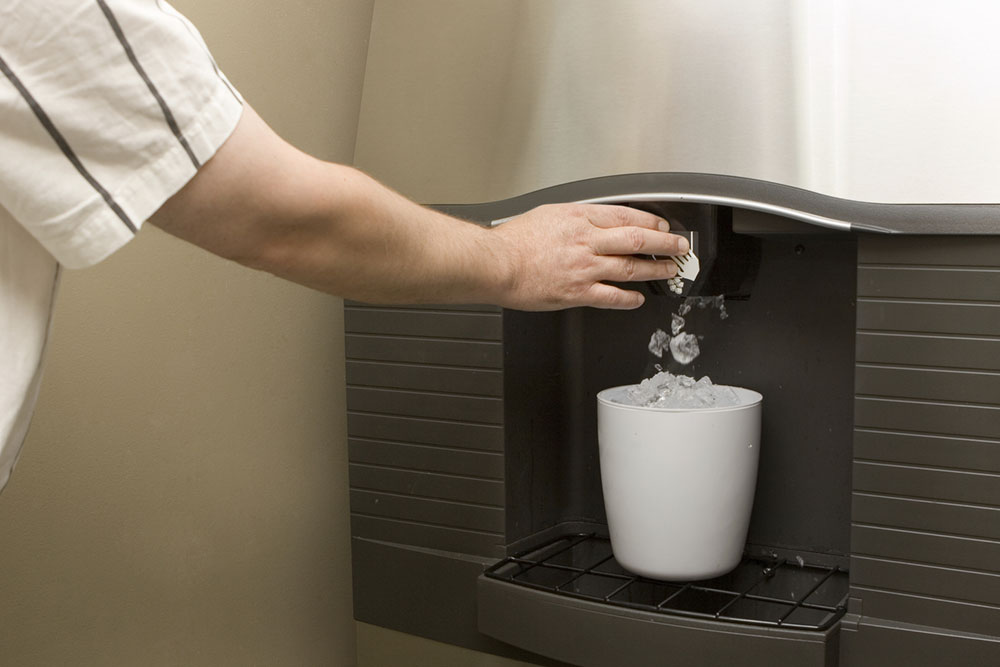5 mistakes to avoid when buying an ice machine

One may not be worried about always having ice at home, and an ice tray or two is probably enough on most days. But, for restaurants and other hospitality establishments, ice is a daily necessity that supports many basic tasks, making ice machines a must-have. If one is considering upgrading to a new ice machine or is buying one for the first time, they should avoid the following mistakes to make an informed purchase:
1. Ignoring plumbing compatibility
To function well and pump out ice at regular intervals, ice machines require a steady stream of water. This is made possible by directing the restaurant’s plumbing system. When buying an ice machine for an establishment, one must pay close attention to the plumbing system and pick a compatible option. Some aspects to consider include the location of the floor drain, the inlet and outlet valves, and local building codes.
2. Choosing the wrong type
There are various types of ice machines, all serving the same function—to produce ice quickly without too much of a hassle. However, they can differ in their delivery systems and placement, catering to different needs. Based on the placement, one can choose from the following types:
Undercounter commercial ice machines: As the name suggests, these machines are placed under the counter and can make hundreds of pounds of ice per day. Undercounter machines are suitable for restaurants, bars, and hotels, as they do not take up any valuable counter space.
Countertop commercial ice makers: For smaller establishments such as cafes, kiosks, and diners, countertop commercial ice makers may be a better option. The machines tend to be smaller in size and can also produce anywhere between 300-400 pounds of ice per day.
Modular commercial ice machines: These are also known as ice machine heads, and they are generally placed above the ice bin. They can produce up to 1,000 pounds of ice per day, making them perfect for large cafes, restaurants, and other bigger food service establishments.
Ice machines can also be categorized based on the type or shape of ice they make. These may include:
Shaved ice maker: Shaved ice has a large surface area and is commonly used for storing fresh produce, seafood, and meats and in salad bars and cocktails. It is also frequently used in nursing homes and hospitals.
Nugget ice maker: These are a lighter form of shaved ice that prevents excessive fizzing and foaming. They are commonly added to carbonated beverages and cocktails.
Half cube maker: Half cubes are slightly larger than shaved ice and nuggets and tend to melt slowly. These are generally found in ice dispensers to add to cold drinks and carbonated beverages.
Full cube makers: These machines make larger, full-sized cubes that are used in ice displays, banquets, and more.
Gourmet ice makers: For a more premium experience, many upscale establishments also use gourmet or specialty ice of varying shapes. These are most commonly seen at weddings, banquets, and fine dining restaurants.
3. Forgetting about scale
When buying a specialty machine such as an ice maker, it is also important to factor in all needs. The last thing anyone needs is falling short of ice during service. To avoid this, think about the amount of ice the establishment needs on a daily basis and add a buffer of 10 to 20% to this number to account for future growth. Also, consider the available space in the kitchen, energy needs, water requirements, and other requirements before shortlisting suitable machines. Depending on the size of the serving glass, here is a general estimate to understand how many pounds of ice are needed in a day:
– 7 to 10 oz cups would require 40 pounds of ice per 100 drinks
– 12 to 16 oz cups would require 60 pounds of ice per 100 drinks
– 18 to 24 oz cups would need 90 pounds of ice per 100 drinks
4. Choosing the wrong condenser
The condenser is a crucial part of the ice maker. It is responsible for keeping the system cool despite the superheating action in the evaporator and compressor components. There are three main types of condenser to choose from:
Air-cooled condenser: This direct cooling system is perhaps the most affordable option of the three. This type uses ambient air to make ice and functions without any external sources of water.
Water-cooled condenser: This type uses water to transfer the heat from the compressor. Water-cooled condensers tend to be relatively smaller in size and easy to set up with most plumbing arrangements, making them ideal for compact restaurant kitchens and cafes. These units are designed to be used in areas where temperatures reach around 80 to 90 degrees and dusty or polluted environments that are not suitable for air-cooled condensers.
Remote-cooled condensers: These condensers are popularly used in HVAC systems but have quickly found their way to ice makers as well. These machines promise silent operations and are ideal for places with water scarcity. However, they may require more storage space, as the condenser unit generally comes separate from the interior unit.
5. Ignoring upkeep needs
Lastly, one should avoid overlooking the maintenance and cleaning needs of the ice machine while making a purchase. Some machines require special care all year round, which can have a significant impact on bills. One should pick a machine that is both affordable and low-maintenance. Additionally, one must pay attention to where the machine is placed. For instance, outdoor ice makers are more susceptible to contamination and theft, as they have some high-value parts such as condensers, chips, and more. So, getting this type of ice machine can add to ownership costs.







